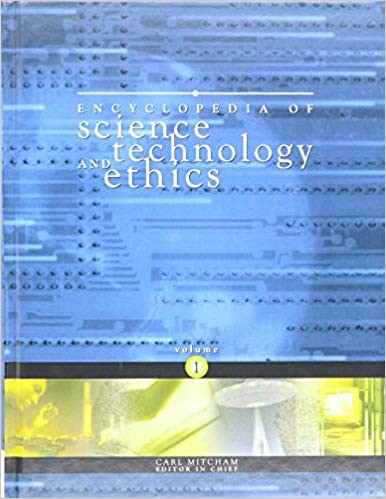INSTINCT COMBAT SHOOTING vs. INDEXING
© 2012, Chuck Klein
Published: Law Officer Magazine, Feb 2012
Just to keep abreast of the “industry,” I periodically change gun magazine subscriptions. After an absence of many years, I re-subscribed to American Handgunner and was surprised to read a columnist championing the old mantra of focus on the front sight. Sight pictures and focusing on only the front sight might be a great advantage (even preferable) at distances beyond close quarter combat where accuracy trumps speed. But, paying attention to anything other than the target is of negative value inside the CQC range.
Recently, I tendered my 2010 Law Officer article, INSTINCT COMBAT SHOOTING, The Tricks for re-print in AH. The editor, however, refused to consider anything outside their staid and old look-at-the-front-sight routine, regardless of distance. Oh well, they’re civilians and don’t understand the real-life factors of the ICS techniques with its inherent life-saving advantages.
INSTINCT COMBAT SHOOTING: The act of operating a HANDGUN by focusing on the target and instinctively coordinating the hand and mind to cause the HANDGUN to discharge at a time and point that ensures interception of the target with the projectile.
The editor of AH insisted that not only was I not really shooting instinctively by focusing on only the target, but was “indexing” my shots by actually bringing into my realm of shooting the front sight or at least the front portion (slide/barrel) of the handgun. He went on to challenge me to have someone hold a piece of cardboard in front of me to block my view of the handgun. This editor then projected that if I experienced this blockage, I would be unable to hit anything. He might be confusing hip-shooting with the tactic of instinctively firing a shot when the handgun comes into battery at or near eye level. Please note, I’ve been teaching, writing about and practicing what I preach for over 40 years.
Regardless of whether the front sight or front portion of the handgun is in my tunnel of vision, as long as I don’t expend any time trying to align these appendages with the target there is no impact. In other words, so what if the shooter can see his hand or anything else in his line of fire as long as he is focused (concentrating) on the intended point of impact.
Somehow I must have failed to communicate to this editor the difference between INSTINCT COMBAT SHOOTING and use-of-sights shooting. I have never claimed, nor have other proponents (Rex Applegate, Fairbairn & Sykes, et al), that while focusing on the target the handgun, per se, is not in the peripheral vision of the shooter. Of course, it is, just like the entire target is. Instinct shooting is not just looking at the target, per se, it is looking at (focusing – intense focusing) on a small portion of the target – such as a button or dirt spot on the target (the center of the “X” of a paper target if practicing on the range). When the handgun comes into battery (out in front and pointed toward the target) is when the mind should have conditioned the trigger finger to pull, pull, pull. Making sure of a sight picture or “indexing” in CQC scenarios is just wasting time – time that might mean the difference ‘tween your life or his.
The significant difference between true instinct shooting and “indexing” is the focus is on the target – 100%. If the shooter is trying to consciously or even subconsciously line up a sight picture or even the barrel/slide of the firearm then time is being wasted.
As noted in aforementioned Law Officer.com article, during the micro-short span of time when a police officer has decided to shoot and is in the actual act of discharging a shot, a LEO’s concentration level should be at tunnel-vision level. To put it another way, all of the officer’s concentration should be on the intended point-of-impact and not conscious of barrel/slide or any other peripheral objects. Taking the time, even if only a split second to “index” - align an object with the target - can mean the difference between life and death. For a civilian target shooter, the difference might only mean a few points of increased score. For a cop, it’s his or her life.
Some might call this intense focus tunnel-vision. It is. Though tunnel-vision has been projected as a no-no, it is mandatory during the brief moment when you transition from deciding to shoot to the completion of that shot(s). Of course, you have to be aware of additional threats and the background (innocents), but only before the decision to shoot. Once the time frame of decide-to-shoo- to-completion-of-the-shot(s) has begun, full concentration - oblivious to all else – is required. This time frame during which you are engaged in tunnel-vision is only a matter of milliseconds. Perhaps, World Champion race car driver, Phil Hill said it best: “True concentration is not aware of itself.” (Car and Driver, November 1962).
In VISUAL BEHAVIOR by Beverly Jones (ISBN 0-9627939-1-4), she writes about Doing What We’re Doing. “One of the fundamentals of control theory, in fact the most basic concept, is the idea of feedback. When information is incorporated into what the system is controlling, then the system can continue to control, self-correct all the way. In order to satisfy a pre-set goal of a given temperature, the thermostat tells the furnace to turn on when the information “not warm enough” enters the system and tells the furnace to turn off when “it’s just right” – when the desired temperature has been reached. In voluntary human behavior, vision provides critical feedback to all that we do. When that feedback loop is interrupted or only functions feebly, then the phenomenon of “doing what they’re doing” shows up.”
Now interject this feedback concept to the milliseconds required from deciding-to-shoot to the trigger-reaching-its-terminal-position and the idea of trying to add feedback into the equation should be clear - it’s time consuming – deadly time consuming if you’re a LEO facing a Lethal Force Incident. Self-correcting, when faced with a shoot-now situation, is not conducive to survival. If you are trained to interrupt your decision to shoot by relying on visual feedback (sight/slide alignment) then time is lost. Just like the thermostat, if you’re conditioned (programed/trained) to “index” your sight picture – that’s what you will do even if it takes more than a few micro-seconds.
Target shooting, which most readers of civilian gun magazines train for, allows for attaining proper stance, target knowledge and other niceties that a LEO does not have when faced with a scenario that might have never been encounter before. During LFIs, a law enforcement officer might be required to draw-on-the-drop, shoot from a lying down (as in knocked-down) position or any other imagined or unimagined condition. Shooters, civilian or LE, do as they are trained to do. If your training is to “index” before shooting and you are required to engage a future handcuffee from an unorthodox position or the perp is on the move, then you will seek to “index” your shot. If, on the other hand, your training is to look at where you want your bullet to strike, you will only need to squeeze your shot off – as your training mandates.
In the stay-alive world, if you see a potential cop-killer advance toward you with deadly intent, you will most likely be looking at him with your undivided attention. That is not enough. Having decided to engage in a close-quarter firefight, you should – while in the process of going from that point of decision to battery –– focus on a small point (button, stain, shirt pattern). This intensity of vision and concentration – at the instant just before firing – will allow your natural mental powers to coordinate the hand and trigger finger to cause the firearm to discharge at the most opportune moment.
All of this needs to happen in a very small time frame, e.g., just short of simultaneous.
One last look: It’s mid-watch, you’ve responded to an assault call to find a person lying on the ground who appears to be covered in blood. Exiting your shop amid a gaggle of on-lookers you quickly notice a man dressed in black approaching with what surely might be a knife in hand. The flashes of red and blue strobes bounce off the windows of store fronts and parked cars and there is a lot of movement and noise. You draw your Glock. The distance linking you to this danger suddenly diminishes as the man in black leaps toward you – with what clearly is a knife in the thrust position. Your chances of surviving are significantly reduced if you’re training is to adjust the position of the front sight or “index” a black framed pistol against a black target, at night, with confusing sounds and lighting. At the instant you decide to remove this lethal threat, you should be looking intently at the center of center mass – or even the human nature response of looking at the knife itself.
Many police officers and trainers read civilian gun magazines for their excellent coverage of the latest firearms. However, these magazines’ training tactics are not police oriented and LEO should keep this in mind when perusing them.
(note: I have referenced the term “micro-seconds/milliseconds, etc.” a number of times in this article. These extremely short spans of time are best-case-conditions. If you are trained to add seek-a-sight-picture or “index” your shot it might take significantly longer under the real life stress of a CQC firefight.)
INSTINCT COMBAT SHOOTING is not for amateurs. It is a concept that requires goals, knowledge, basics of handgunnery and practice.
Chuck Klein, an active member of IALEFI, is the author of INSTINCT COMBAT SHOOTING, Defensive Handgunning for Police (now in it’s 3rd edition) and other police and firearm related books and articles. He may be reached through his web site: www.chuckklein.com.
.jpg)


